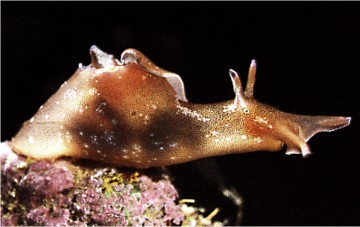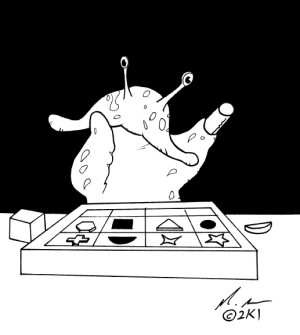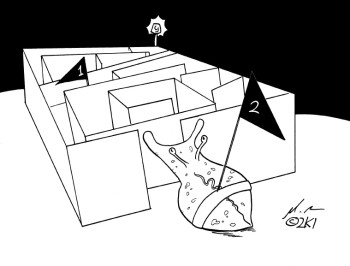|
Learning
and Memory in Aplysia
Aplysia is a marine snail. Aplysiids were given the common name of 'sea hare' by the Ancient Greeks because of their supposed resemblance to the European hare (the "ears" are certainly reminiscent, see picture).
Aplysia's orienting and homing capabilities seem rather underdeveloped as well. But in any case, with a snail's speed, it wouldn't really be suited to study maze navigation anyway...
So what Aplysia behavior could one use to train it? The main focus on Aplysia neurobiology has been on classical conditioning of the defensive withdrawal reflex. A light tactile stimulus that would normally not produce any defensive reflex in the animal, is repeatedly paired with a strong noxious stimulus, usually an electric shock. After a few pairings, the animal shows the defensive reflex to the light tactile stimulus. Still, classical conditioning has been studied in a variety of animals, why Aplysia? The nice feature that makes Aplysia so attractive for neurobiologists is its large brain cells (neurons). The cell body of one neuron can measure up to 1mm in diameter, which makes it relatively easy to study the physiology of these cells to find out how they accomplish learning. For operant conditioning, on the other hand, one needs a spontaneous behavior that can be modified by reinforcement, so a reflex is not suitable. Well, about the only thing these animals do in their natural environment is to eat and reproduce. Naturally, their feeding behavior has received some attention from neurobiologists (including me) interested in operant conditioning (see videos of the Aplysia biting behaviour). The following documents describe our research on operant conditioning of Aplysia's feeding behavior on various levels:
|


